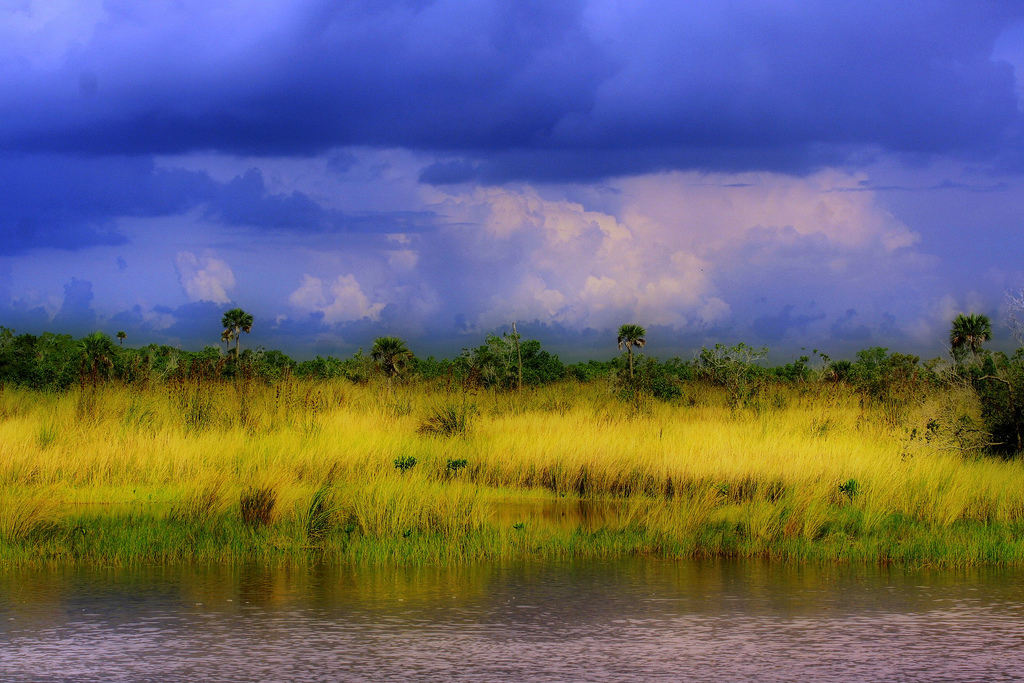Preserving the Future of Citrus through Environmental Stewardship
The 21st century dawned on a citrus industry that was more determined than ever to preserve and sustain its cultural heritage, natural environment and ecosystems for future generations. Citrus growers continually contribute to this cause in numerous ways. 800,000 acres of Florida are used for the production of citrus, and the Best Management Practices (BMPs) these groves implement contribute to the protection and restoration for major concerns in environmental conservation and sustainability. Citrus groves provide green space and various forms of conservation buffers.[emember_protected custom_msg=”Click here and register now to read the rest of the article!”]
Conservation buffers in citrus groves can have native or planted vegetation established which aid in receiving any potentially hazardous residues or runoff, filtering them before they reach the surrounding area. In order not to compromise their purpose, growers refrain from agrichemical or other treatments in these buffers. Regular inspections, rejuvenations, and maintenance of buffers are performed regularly to maintain their integrity. The Florida Forest Service assists in prescribed burns for these areas to aid controlling native and invasive vegetation.
Types of citrus grove buffers:
Grove borders can encompass the grove with permanently planted or natural vegetation, such as rows of trees that serve as wind breakers. The function of these borders that surround the grove is to reduce wind and water erosion, guard soil and water quality, and provide shelter to wildlife habitats. The primary objective of a grove border depends on the neighboring role of land and environmental sensitivity. Other types of buffers include filter strips and riparian buffers, which each have their ideal application and purpose in the grove.
The Florida Aquifer is the major underground source of water for the state. Citrus growers help protect this precious resource through carefully guarding and caring for wellheads. Growers determine well location, construction, and proper management conscientious of surrounding environment. They prevent contamination of wells with precise compliance to regulatory requirements, common sense measures, affective well placement, and careful agricultural management around wells.
Protecting natural water resources like the wetlands, springs, and streams is one of the ways citrus growers are leaders in conservation. The Water Management District’s (WMDs) legislative mandate and U.S. Army Corps of Engineers (COE) regulates direct impacts on wetlands, as well as monitoring secondary and cumulative impacts. Growers carefully control non-point source water pollution (NPS) and minimize pollutant discharges that occur from water runoff, leaching, and seepage to surface waters. In order to protect Florida’s natural water resources, the BMPs that citrus growers undertake include vegetative buffers used near wetlands, riparian buffers for streams, non-fertilized vegetative buffers for first and second magnitude spring recharge basins, and preventing backflow with proper maintenance and construction for well operations and protection. Stormwater runoff from developed areas, rooftops, driveways, and streets are impervious towards recharging the aquifer. Citrus groves help replenish water to Florida’s natural sources.
In part II of The Birth of an Industry’s conclusion, discover how citrus groves utilize “water reuse” technology to help preserve Florida’s natural resources.
CREDITS
story by J.P. SMITH
photos courtesy of FDACS
[/emember_protected]

